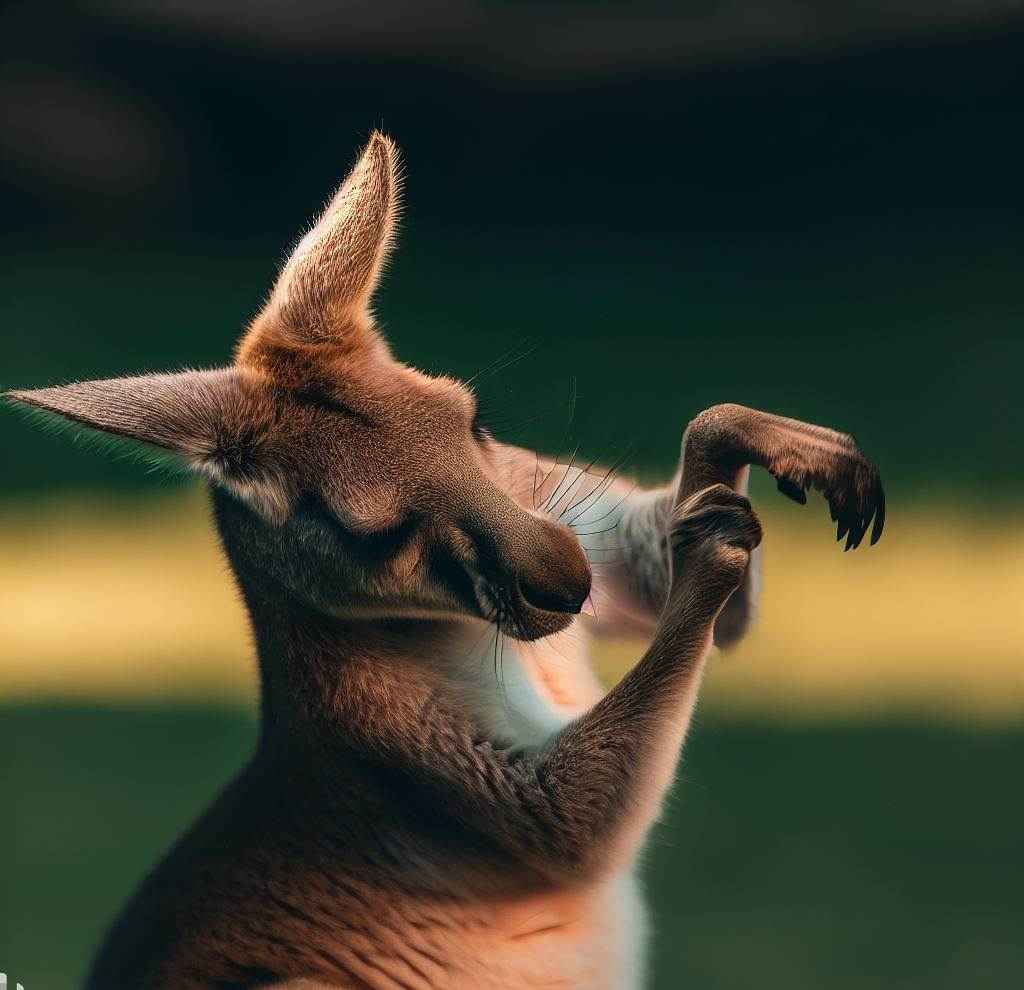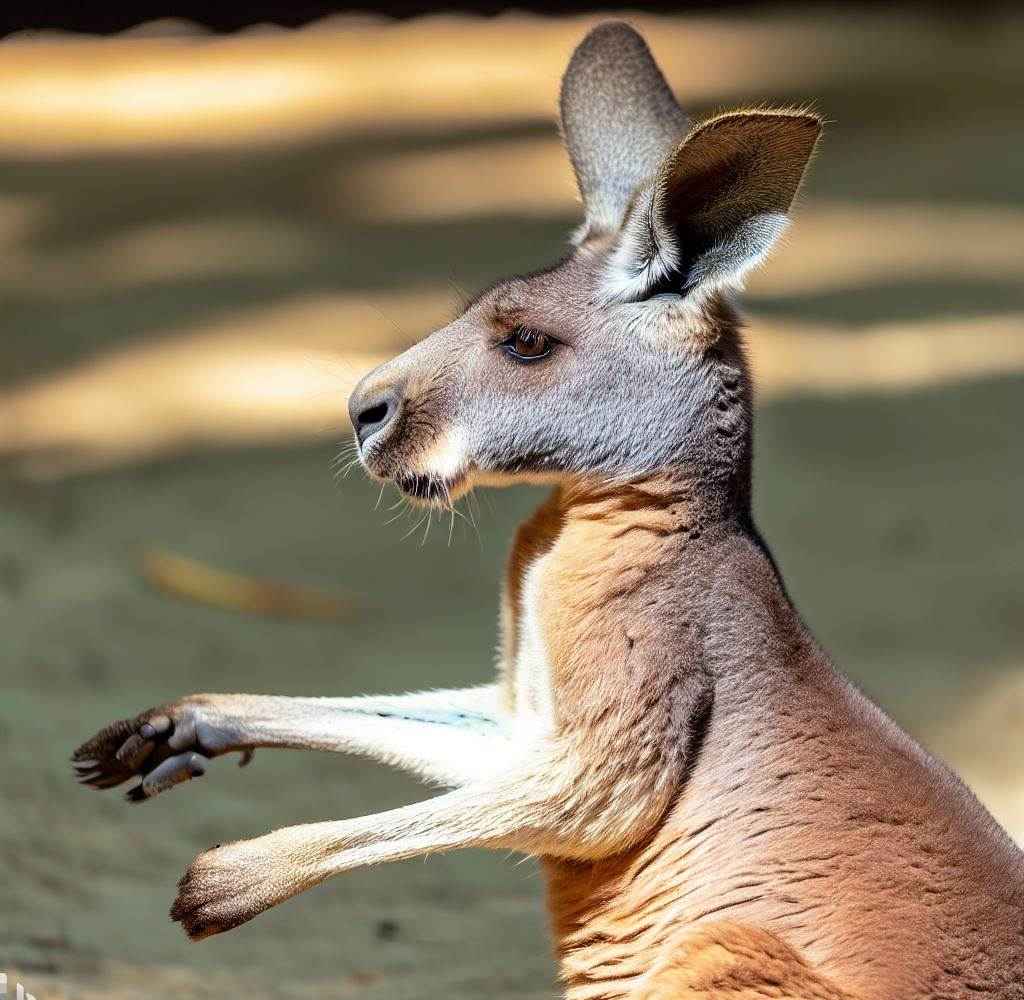Why Do Kangaroos Bite?
Do Kangaroos Bite? Kangaroos are typically gentle herbivores that only bite when threatened, trapped, or provoked. Captivity raised kangaroos or wallabies can provoke physical aggression or potentially recognizing one as a different species by causing scratches and kicks as a form of “play fighting.” Despite their propensity to graze on grasses and their major defense comes from their strong rear legs which they employ to kick prospective attackers hard. When they are helpless to defend themselves where they frequently resort to biting.
An Important thing to note that kangaroos prefer to avoid confrontations and will usually opt for fleeing or hopping away from danger. Kangaroo-human encounters are rare, but respecting their territory and maintaining a safe distance is crucial to minimize the risk of kangaroo bites. The kangaroos may bite in self-defense even though they are not naturally violent. To enjoy the company of these fascinating marsupials without any incidents but it is best to appreciate them from afar and let them go about their business in peace.
Introduction:
Kangaroos are those iconic marsupials native to Australia and are enormous creatures. While we often associate them with hopping around the Outback so, their behavior and interactions can be quite perplexing to the untrained eye. This blog post explores the behavior of kangaroos their focusing on their social dynamics, feeding habits and their tendency to bite. Do Kangaroos Bite, yes when provoked.
Are Kangaroos Dangerous?
Kangaroos are despite being generally peaceful that can be deadly due to their strong hind legs and vicious claws which can cause severe harm when provoked or when feel in danger. Kangaroos are the wild animals that can exhibit aggressive behavior if threatened or cornered. Male kangaroos are being larger and are more prone to aggression during mating season. They have powerful hind legs with sharp claws for defense that they primarily use kicks to target the abdomen or head.
Kangaroo bites can be painful due to their sharp teeth. Kangaroos are vulnerable during mating season but less harmful to humans than predators like lions or bears. When encountering kangaroos in the wild, show respect and maintain a safe distance. Approaching too closely especially with young joeys, can upset the animals and cause defensive behavior. Handling kangaroos with care and respect in their native habitat, is crucial, as they are not intrinsically hazardous.
Do Kangaroos Bite Humans?
A captivity-raised kangaroo or wallaby may come to you with bites and scratches to potentially recognizing you as a different species and engaging in play fighting or asserting its authority by scratching and kicking you.
Kangaroos can bite humans as a last resort when they feel threatened or cornered but they are not naturally aggressive. Instead of biting they prefer to protect themselves by kicking with their strong rear legs. The kangaroos may also use their teeth to defend themselves and defend their young. Due to their strong teeth, these bites may be unpleasant and may result in injury. Both kangaroo bites and kangaroo aggression against people are uncommon.
Since they are wild creatures and they can exhibit unexpected behavior. To lessen the risk of a kangaroo bite or any harm to both people and kangaroos. It is advisable to remain a safe distance when seeing them in their natural habitat and to refrain from actions that can excite or stress them. The best way to guarantee peaceful cohabitation is to respect each person’s boundaries and personal space.
Will A Kangaroo Attack You?
Kangaroos can attack individuals with their rear legs, forepaws or kicks. It is essential to avoid fighting with them because as severe injuries can result. It’s also important to understand the local kangaroos’ habits, such as their travel, feeding and resting locations. Kangaroos generally do not attack humans unprovoked. They are peaceful herbivores that prefer to avoid confrontation but there are circumstances where a kangaroo might exhibit aggressive behavior towards humans.
Male kangaroos particularly during the mating season they could become more territorial and aggressive as they compete for mates. These larger dominant males may perceive humans as a threat and exhibit defensive behavior. The female kangaroos with joeys young kangaroos can also become protective and may display aggression if they feel their young are threatened. Kangaroos have powerful hind legs and sharp claws which they can use to defend themselves.
While their primary means of defense is kicking so, they can bite as well and their bites can be painful due to their sharp teeth. To reduce the likelihood of a kangaroo acting aggressively towards you then you can also maintain a safe distance when observing them in the wild and avoid any actions that might be seen as threatening. Overall, while kangaroo attacks on humans are rare but essential to respect these wild animals and their natural behaviors to ensure a peaceful coexistence.
Do Kangaroos Kick When They Attack?
Yes, kangaroos primarily use their powerful hind legs to kick when they feel threatened or are provoked rather than resorting to other forms of attack. Kangaroos may attack people and cause significant injuries by pushing or grabbing them with their forepaws or hind legs. In order to prevent potential danger so, it is essential to avoid conflict with kangaroos. These kicks can be incredibly forceful and are their primary means of self-defense.
Kangaroos have evolved to be exceptional jumpers and their hind legs are well-adapted for delivering powerful or swift kicks. Their legs are equipped with strong muscles and tendons and their sharp claws can further enhance the damage inflicted. Kangaroos can balance on their muscular tails which allows them to use both their hind legs for powerful strikes.
When kangaroos perceive a threat then they may lean back on their tail and then use their strong hind legs to deliver a series of rapid or forceful kicks. Kangaroos use kicks as defense and dominance during mating season. It’s crucial to maintain a safe distance when encountering them to avoid provoking them. Although attacks on humans are rare, respecting their space and behavior is essential for the safety of humans and these marsupials, as kangaroo attacks are rare.
Kangaroo Bite Force:
Kangaroos’ bite force varies based on species, size and age. They have sharp teeth for tearing through plant material but not as strong as predators like lions or crocodiles. Their bite force is primarily designed for grinding or chewing vegetation including tough grasses and shrubs that make up their diet. It is more suited for herbivorous consumption rather than for capturing or incapacitating prey.
The biting force of a kangaroo is 925 PSI which is six times greater than that of a person 162 PSI, although it is less than that of a grizzly bear 975 PSI. But the kangaroos cannot kill people with a bite. Kangaroos are not considered dangerous primarily because of their bite force. Their main defensive and offensive weapon is their powerful hind legs which they use for kicking.
These kicks are capable of delivering significant force and can cause injuries to potential threats. These kangaroos possess sharp teeth and can bite if provoked or threatened so their bite force is not a notable aspect of their defensive capabilities. They rely more on their powerful leg muscles and sharp claws to defend themselves and establish dominance within their social hierarchy.
Facts & Features Of Kangaroos:
Kangaroos, iconic marsupials native to Australia and are known for their unique features and fascinating facts:
- One of the most distinctive features of kangaroos is their pouch which is used to carry and nurse their young, called joeys.
- Female kangaroos have a forward-facing pouch while wallabies and wallaroos have top-opening pouches.
- Kangaroos are renowned for their hopping gait and for the most efficient mode of terrestrial travel for any mammal.
- Kangaroos appear in a variety of sizes, from the little tree kangaroo and wallabies to the imposing red kangaroo, measuring over 6 feet tall and can travel incredible distances at great speeds because to their modified hind legs and lengthy feet.
- This size variation reflects different species and regions.
- Kangaroos are herbivores that mainly grazed on grasses and plants.
- They have specialized teeth for grinding plant material by allowing them to extract nutrients from fibrous vegetation.
- Kangaroos are social animals and often form groups known as mobs or troops.
- These groups have complex hierarchies and they communicate through various vocalizations and body language.
- Kangaroos have a unique reproductive system.
- Females can delay the development of a fertilized egg until environmental conditions are favorable.
- This adaptation helps ensure the survival of their young in challenging environments.
- Kangaroos are not just a symbol of Australia and they are a national emblem featured on the country’s coat of arms and coins.
- Some kangaroo species face conservation challenges due to habitat loss and human interaction.
- Sustainable management of kangaroo populations is crucial for their long-term survival for making them a captivating part of Australia’s wildlife and culture and an intriguing subject of study for scientists and nature enthusiasts worldwide.
FAQs:
1 Do kangaroos ever attack humans?
Kangaroo attacks on humans are rare but they can occur in self-defense or if the kangaroo feels threatened. Their primary means of defense is powerful kicks with their hind legs and they may also use their sharp teeth. To avoid such situations, it’s essential to respect their space and observe them from a safe distance in their natural habitat.
2 How strong is a kangaroo bite?
A kangaroo’s bite is not exceptionally strong compared to predators. Their teeth are adapted for grinding vegetation rather than inflicting powerful bites. While it can be painful if bitten but it’s not a primary means of defense for kangaroos.
3 How bad can a kangaroo hurt you?
A kangaroo can potentially hurt you quite badly with its powerful kicks and sharp claws which cause injuries ranging from scratches and bruises to fractures and lacerations. Their kicks are their primary means of defense and can deliver significant force. It is crucial to maintain a safe distance and avoid provoking them to minimize the risk of harm.
4 Can kangaroos break bones?
Yes, kangaroos have the potential to break bones with their powerful kicks especially if they strike vulnerable areas like the ribs or limbs. Their leg muscles are incredibly strong and their sharp claws can add to the impact. It’s important to exercise caution and keep a safe distance when encountering kangaroos to avoid such injuries.
5 Are kangaroos friendly to humans?
Kangaroos are generally not considered friendly to humans. They are wild animals and can exhibit unpredictable behavior especially if they feel threatened or cornered. It’s important to observe them from a safe distance and avoid actions that may provoke them to ensure a peaceful coexistence.




